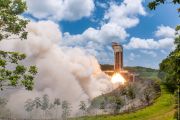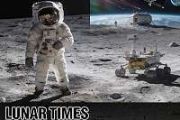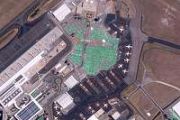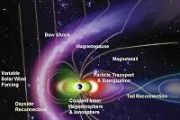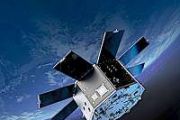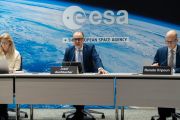
Copernical Team
MTG-I1 lifts off
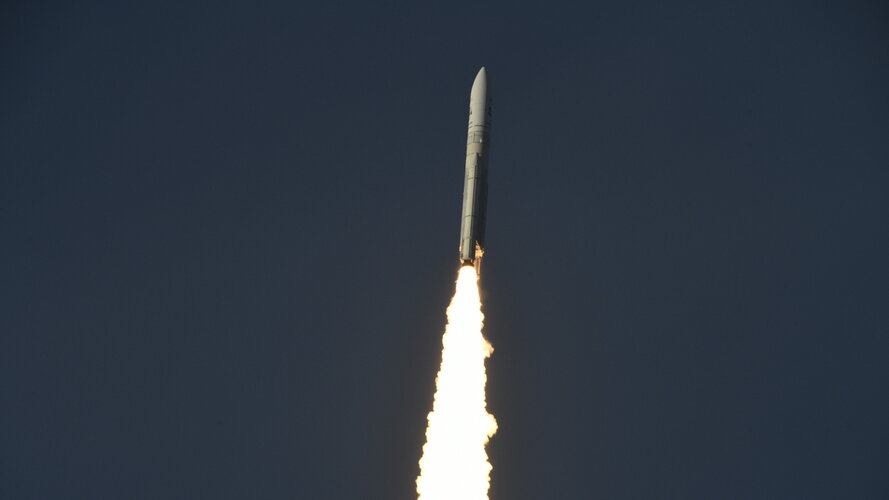 Video:
00:03:33
Video:
00:03:33
The first Meteosat Third Generation Imager (MTG-I1) satellite lifted off on an Ariane 5 rocket from Europe’s Spaceport in French Guiana on 13 December at 21:30 CET.
From geostationary orbit, 36,000 km above the equator, this all-new weather satellite will provide state-of-the art observations of Earth’s atmosphere and realtime monitoring of lightning events, taking weather forecasting to the next level. The satellite carries two completely new instruments: Europe’s first Lightning Imager and a Flexible Combined Imager.
MTG-I1 is the first of six satellites that form the full MTG system, which will provide critical data for weather forecasting over the
A new era of weather forecasting begins
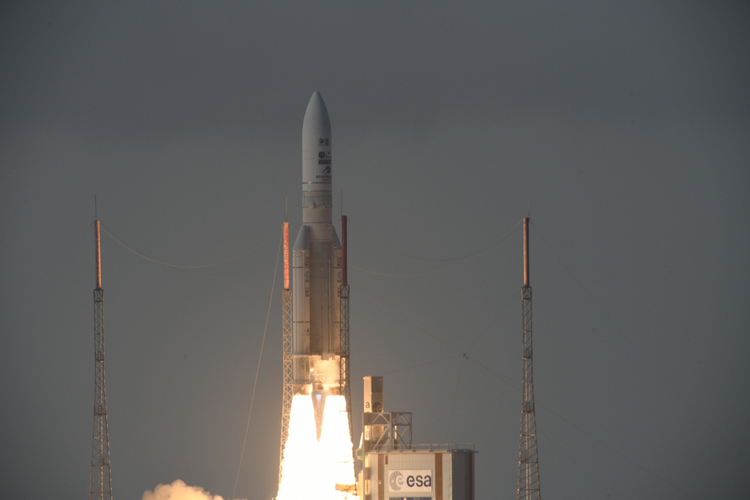
The Meteosat Third Generation Imager satellite, set to revolutionise short-term weather forecasting in Europe, lifted off on an Ariane 5 rocket at 21:30 CET (17:30 local time in Kourou) on 13 December from Europe’s Spaceport in French Guiana. Its solar panels deployed just over 75 minutes later.
Sound of a dust devil on Mars recorded for first time
 The sound of a dust devil on Mars was recorded for the first time as the eye of the whirlwind swept over the top of NASA's Perseverance rover, a new study said Tuesday.
"We hit the jackpot" when the rover's microphone picked up the noise made by the dust devil overhead, the study's lead author Naomi Murdoch told AFP.
The researchers hope the recording will help to better understand the
The sound of a dust devil on Mars was recorded for the first time as the eye of the whirlwind swept over the top of NASA's Perseverance rover, a new study said Tuesday.
"We hit the jackpot" when the rover's microphone picked up the noise made by the dust devil overhead, the study's lead author Naomi Murdoch told AFP.
The researchers hope the recording will help to better understand the US researchers announce historic nuclear fusion breakthrough
 US researchers announced a historic nuclear fusion breakthrough on Tuesday, hailing a "landmark achievement" in the quest for a source of unlimited, clean power and an end to reliance on fossil fuels.
The Lawrence Livermore National Laboratory (LLNL) in California said an experiment it conducted this month "produced more energy from fusion than the laser energy used to drive it."
The US
US researchers announced a historic nuclear fusion breakthrough on Tuesday, hailing a "landmark achievement" in the quest for a source of unlimited, clean power and an end to reliance on fossil fuels.
The Lawrence Livermore National Laboratory (LLNL) in California said an experiment it conducted this month "produced more energy from fusion than the laser energy used to drive it."
The US Artemis I: liftoff to splashdown
 Video:
00:01:11
Video:
00:01:11
The uncrewed Artemis I test flight saw Orion travel around the Moon and farther than any spacecraft designed to carry humans and return them to Earth. Artemis is the international lunar exploration programme that is taking humankind to the Moon. This first mission provided a first test of both NASA’s Space Launch System (SLS) and the Orion moonship that was propelled by the European Service Module’s 33 engines beyond the Moon and into deep space. Future European Service Modules will provide electricity, propulsion and cabin thermal control for astronauts on lunar missions as well as breathable atmosphere
Poland's only cosmonaut, who circled Earth in 1978, has died

Poland's only cosmonaut, Gen. Miroslaw Hermaszewski, who circled the Earth in a Soviet spacecraft in 1978, has died. He was 81.
The retired air force pilot's death on Monday was announced via Twitter by his son-in-law, European Parliament member Ryszard Czarnecki. He later told Polish media outlets that Hermaszewski died at a hospital in Warsaw of complications from a surgery he had undergone in the morning.
"On behalf of the family, I'm confirming the very sad news about the death of Gen. Miroslaw Hermaszewski," Czarnecki tweeted, calling him a "great pilot, good husband and father, and much beloved grandfather."
Hermaszewski became a national hero thanks to his trip to space. For nine days in June and July of 1978, Hermaszewski and Soviet cosmonaut Pyotr Klimuk circled the Earth in the Soyuz 30 spaceship that docked at the Salyut 6 orbital space station. They went around the globe 126 times.
In an 2018 interview with the Polish newspaper Rzeczpospolita, Hermaszewski said his biggest fear during the flight was that their spacecraft would be struck by a meteor. His and Klimuk's senses were sharpened, catching even the smallest sound, he said.
Orion splashes down in Pacific Ocean after trip around the moon
 NASA's Orion capsule, after traveling 1.4 million miles through space, including orbiting the moon and collecting data, returned to Earth on Sunday.
The 25 1/2-day Artemis I mission landed in the Pacific Ocean off Mexico's Baja California at 12:40 p.m., NASA reported.
"Splashdown! From Tranquility Base to Taurus-Littrow to the tranquil waters of the Pacific, the latest chapter of
NASA's Orion capsule, after traveling 1.4 million miles through space, including orbiting the moon and collecting data, returned to Earth on Sunday.
The 25 1/2-day Artemis I mission landed in the Pacific Ocean off Mexico's Baja California at 12:40 p.m., NASA reported.
"Splashdown! From Tranquility Base to Taurus-Littrow to the tranquil waters of the Pacific, the latest chapter of FAST reveals unprecedented details of the Milky Way
 Many bright stars gather in the night sky and form a Milky Way across the sky. It is our home galaxy in the vast universe, however, the structure and composition of the Milky Way are mysterious yet. The vast interstellar space between the billions of stars is not empty, but filled with tenuous interstellar medium.
The diffuse hydrogen gas radiates a spectral line with a frequency of around
Many bright stars gather in the night sky and form a Milky Way across the sky. It is our home galaxy in the vast universe, however, the structure and composition of the Milky Way are mysterious yet. The vast interstellar space between the billions of stars is not empty, but filled with tenuous interstellar medium.
The diffuse hydrogen gas radiates a spectral line with a frequency of around Scientists find new hints that dark matter could be made up of dark photons
 Dark matter could be made up of ultralight dark photons that heated up our universe: this is a new scenario proposed in a study recently published in the scientific journal "Physical Review Letters". This hypothesis, the authors say, is in excellent agreement with observations made by the Cosmic Origin Spectrograph (COS) on board the Hubble Space Telescope, which takes measurements of the "cosmi
Dark matter could be made up of ultralight dark photons that heated up our universe: this is a new scenario proposed in a study recently published in the scientific journal "Physical Review Letters". This hypothesis, the authors say, is in excellent agreement with observations made by the Cosmic Origin Spectrograph (COS) on board the Hubble Space Telescope, which takes measurements of the "cosmi US set to announce nuclear fusion breakthrough
 The US Department of Energy said Sunday it would announce a "major scientific breakthrough" this week, after media reported a federal laboratory had recently achieved a major milestone in nuclear fusion research.
The Financial Times reported Sunday that scientists in the California-based Lawrence Livermore National Laboratory (LLNL) had achieved a "net energy gain" from an experimental fusio
The US Department of Energy said Sunday it would announce a "major scientific breakthrough" this week, after media reported a federal laboratory had recently achieved a major milestone in nuclear fusion research.
The Financial Times reported Sunday that scientists in the California-based Lawrence Livermore National Laboratory (LLNL) had achieved a "net energy gain" from an experimental fusio 














